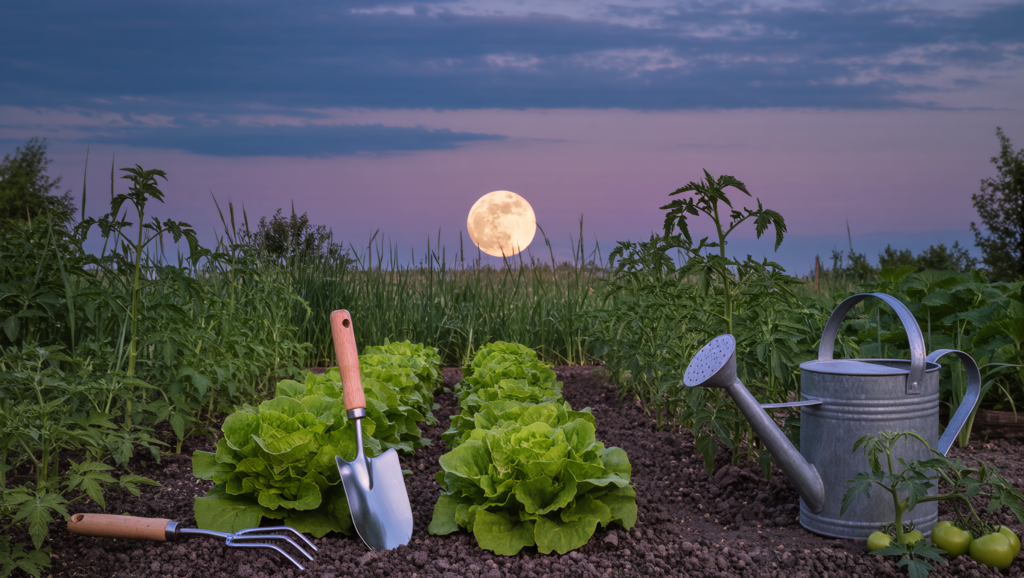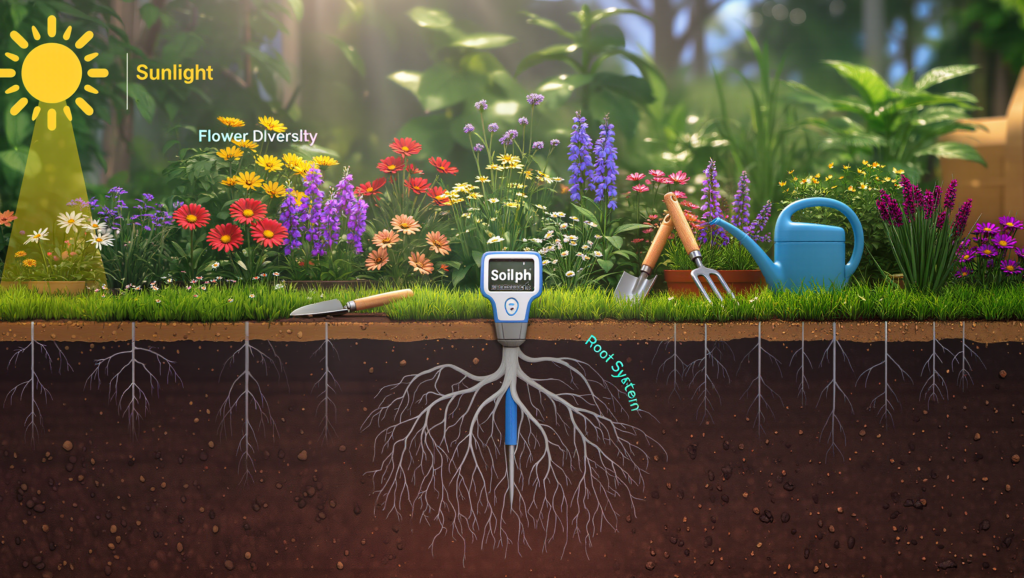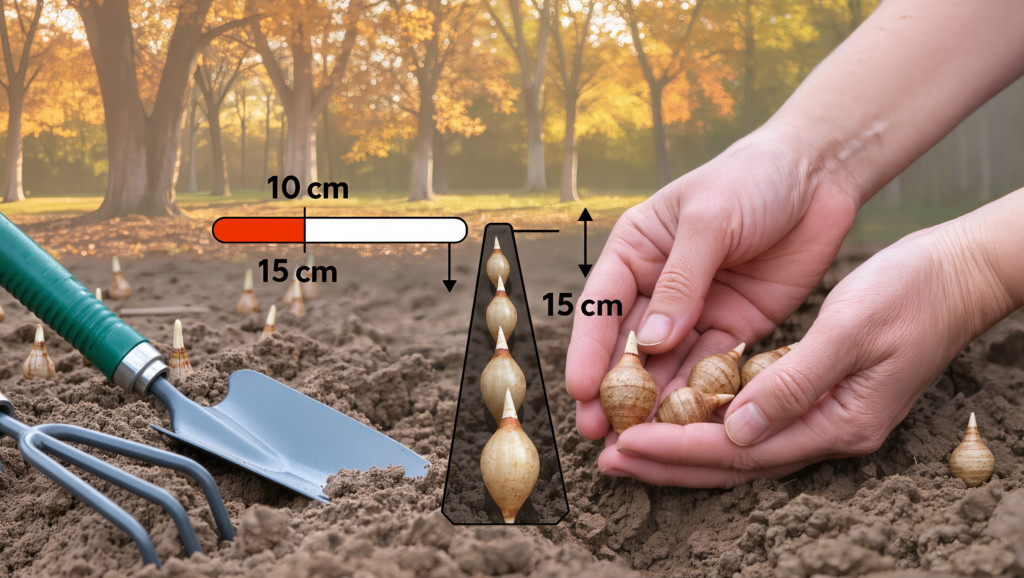Let’s pay less attention for a moment to pinterest-perfect garden hacks and influencer lawn photos—the most gripping advice you’ll ever hear about thriving plants comes from ancient folklore, lunar science, and just a sprinkle of old-world “magic.”
The phenomenon of moon phase gardening isn’t just mystical—it’s a centuries-old practice with cult-like devotees, eyebrow-raising science, and enough strange coincidences to convince even skeptical gardeners that something is going on in the ether. From boosting crop yields to synchronizing sap and soil, the moon’s cycles impose a rhythm that’s “creepy” simply because it’s weirdly effective and rooted in a deeply mysterious connection between sky and soil.
Let’s dig deep into why planting by moon cycle just won’t die—science, folklore, actual effects, and how you can use this ancient method today for bigger, healthier, and sometimes downright uncanny yields.
Brief History: Lunar Gardening and Its Strange Appeal
Moon phase gardening is ancient. From Roman farmers to rural Native American tribes, civilizations have trusted the waxing and waning moon to shape crop cycles. In Rome, lunar festivals marked ideal days for sowing; in China, the moon governs rice planting rituals and harvest ceremonies; throughout Europe, moon-shaped amulets hung over fields long before Amazon delivered plant food.
What’s creepy—and compelling—is how consistently these cultures reported surges in success when they planted in sync with moon phases. Plants sprouted faster, root crops fattened, and harvests were bountiful. This folklore survived millennia not just because it “felt” right, but because people saw real results.
How It Works: Moon Cycles and Garden Biology
The Science
The moon cycles through its phases—new, waxing, full, waning—every 29.5 days. Its gravitational pull shapes not just ocean tides, but the much smaller water reserves within the soil and even the sap in plant cells. Scientists explain this lunar “tide” can draw up underground moisture during certain phases, helping seeds absorb water and nutrients more efficiently.
- Waxing Moon (New to Full): Gravitational pull increases, drawing sap and soil moisture upwards. Sowing above-ground crops (lettuces, tomatoes, beans) in this phase is believed to quicken germination, improve growth rates, and spark lush foliage.
- Waning Moon (Full to New): The force draws moisture down into the earth, nourishing roots. This is prime time for root crops—carrots, beets, potatoes—and for dividing perennials or transplanting trees.
- Full Moon: Supposed to promote larger, juicier fruits and more robust shoots, partly due to increased night light and maximum moisture pull.
Even if the effect isn’t as strong as on the oceans, proponents argue that since plants are mostly water, even a small influence can make a big difference.
Sap, Soil, and Seed: The “Living Tide” Under Your Feet
Here’s where things get weird. Some lunar studies suggest that sap levels within plants, like blood in humans, rise and fall with the moon—affecting not just growth but healing, resistance to bugs, and even flowering or fruit set.
- During waxing moon: Sap rises. Plants channel energy to stems, leaves, and fruits. Above-ground crops planted now reportedly sprout quicker.
- During waning moon: Sap falls. Roots dig deeper. Bulbs, tubers, and perennials planted now are hardier.
Astonishingly, some forestry and winery studies show wood and grape harvest quality varies depending on lunar timing, with subtle changes in taste and density attributed to sap migration.
Planting by Moon Phases: A Methodical Guide
Moon planting divides the lunar cycle into four main quarters:
- New Moon → First Quarter: Plant leafy greens and annuals for bigger leaves (lettuce, spinach, cabbage).
- First Quarter → Full Moon: Plant fruiting crops (tomatoes, pumpkins, beans)—anything harvested for seeds or flesh.
- Full Moon → Last Quarter: Transplant or sow root crops (beets, potatoes, radishes), divide and propagate perennials.
- Last Quarter → New Moon: Don’t plant. Weed, clear, mulch, and prep soil instead.
The Farmers’ Almanac—and countless lunar gardening calendars—expand on these specifics, giving daily plant calendars matched to moon positions for optimal results.
Lunar Gardening Folklore: Rituals and Warnings
Here’s the part that gets spooky.
- Folklore warns against planting within 12 hours before or after a moon phase transition: “The moon is restless, so are the seeds—wait and clear the soil instead”.
- Blood Moons and eclipses: Many cultures believed these lunar events were times of “high energy.” Some sow roots or medicinal herbs only during eclipses for “extra potency”.
- Monday’s moon: Roman and Greek traditions dubbed Monday (“day of the moon”) ideal for planting greens, linking lunar gravitational shifts with sap movement for optimal leaf harvest.
Anecdotal growers claim visible effect—plants sown at the “wrong” time sprout late or produce poorly, while those timed to lunar cycles thrive with uncanny growth.
Is There Proof? What the Science Really Shows
While lunar gardening remains controversial, research is slowly catching up. Biodynamic farmer Maria Thun published decades of experiments showing significant yield increases when sowing by moon phase. University studies (Northwestern, Wichita State, Tulane) have found measurable differences in seed germination, root growth, and even fruit size tied to lunar timing—though not all trials replicate these results.
- Some botanical experiments show seeds absorb more water during new or full moons, leading to quicker germination and larger seedlings.
- Soil microbe studies reveal increased activity and nutrient cycling just after waxing moons, supporting early plant vigor.
- Forestry and wine studies (Holzner et al.) observe subtle but real effects in sap flow and crop quality linked to lunar phase.
Skeptics argue the effects are small and easily overshadowed by other factors—soil quality, weather, watering habits. But even minimal gains (5–15% yield increase) add up over seasons, especially in organic or self-sufficient systems.
What the Science Really Shows
- Use lunar calendars (Farmers’ Almanac is most popular) or smart gardening apps to track optimal days for planting, transplanting, and harvesting.
- Experiment: Keep notes and compare your lunar-planted crops with traditionally sown ones.
- Follow phase transitions closely—avoid the “creepy hours” around major lunar shifts and blood moons for new seeds.
- Adjust for climate: Regional weather still matters most, but lunar timing can boost otherwise lagging gardens, especially for root crops.
Why It’s Still Resonating: Moon Cycles = Natural Calendar
Planting by moon cycles connects you to centuries-old wisdom and natural rhythms—making gardening more intentional, ritualistic, and frankly, richer in experience.
Even skeptics admit: It’s a beautiful way to tune into nature, align your schedule with tangible cycles, and enjoy the “creepy” thrill when your plants seem to respond to cosmic timing.
The Bottom Line: Ritual, Science, and A Little Magic
Moon phase gardening is part folklore, part quirky science, and part personal experiment. Its endurance in diverse cultures, and measurable results for plant yields and health, suggest there may be more to the moon’s power than meets the eye. Whether you’re driven by curiosity, tradition, or determination for a stellar harvest, planting by moon cycles is one of those rare methods that feel magical, look odd, and sometimes—just sometimes—work eerily well.
Maybe that’s reason enough to let a little lunar mystery into your garden this year.








